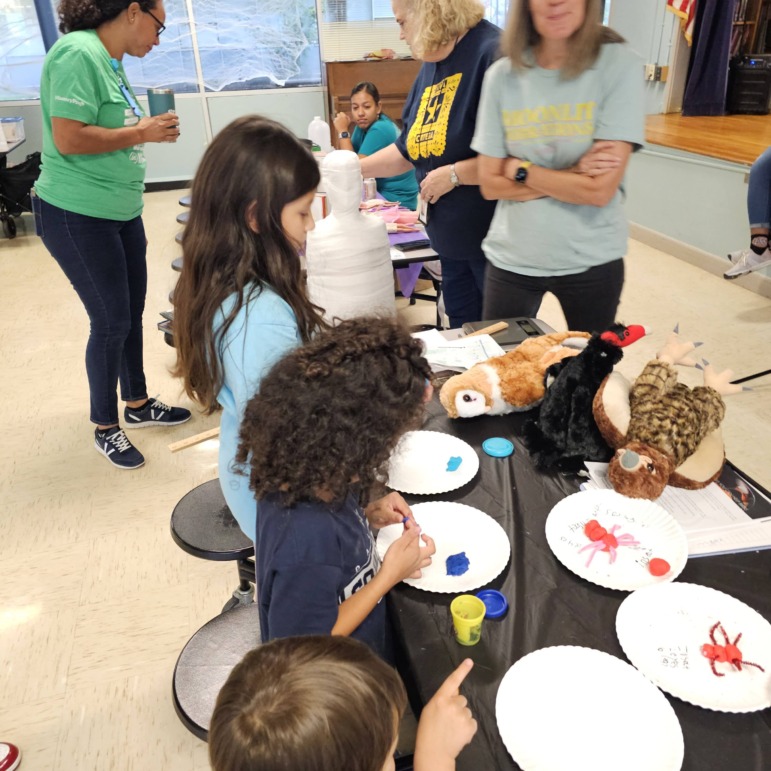When Angel Toscano asked ChatGPT for 10 Halloween-themed activities related to science, technology, engineering, arts and math — STEAM, for short — that could be done with minimum supplies, the popular artificial intelligence bot instantaneously spat out several ideas: Spider web geometry. Pumpkin catapults. Ghost rockets.
Searching for those ideas offline “would have taken the whole morning,” Toscano said, of that Halloween project in 2023, when he was a family engagement specialist at Austin Independent School District.
Making them required string, yard, baking soda, vinegar and other readily available household products that, as Toscano wanted, were budget-friendly and kid-safe.

Courtesy of Angel Tobasco
Angel Tobasco
One of 180 million worldwide users of that AI program, viewed as a time-saver and problem-solver, Toscano, now a tutoring supervisor for that Texas district, started testing AI ChatGPT by having it craft emails for him. He moved on to developing after-school program curricula and activities. Toscano is one side of an educational divide over the arguable merits and dangers of using ChatGPT and other AI bots to teach. While some applaud AI’s seeming efficiencies and its potential to prepare students to navigate an increasingly more AI-dependent world, others are concerned about whether AI adequately protects private information it gathers about students and students’ potential to, for example, use AI to plagiarize their academic papers.
As the debate rages, however, some technology-focused leaders of after-school initiatives say AI is making things easier for what often are cash-strapped, short-staffed after-school efforts. A relative handful of tech-forward afterschool programs are beginning to fully embrace AI, integrating activities such as AI-assisted tutoring, creating chatbots and using AI for everything from the arts to robotics. Yet, many families who are interested in such programs are hard-pressed to find ones that are low-cost or free programs.
“The barriers are significant” for introducing AI into afterschool, said Shawn Petty, a Westat researcher who advises Texas Education Agency’s 21st Century Community Learning Centers Program.
After-school educators find themselves in this unsure area, Petty added. They acknowledge the potential of AI, yet harbor concerns over privacy due to the technology’s capacity to record and store vast amounts of information. Plus, many educators lack the technical know-how to use AI and fear their jobs are at risk.
Many poorer schools have less AI access
The Mark Cuban Foundation has offered after-school AI boot camps for high schoolers in several states since it was founded in 2019, before ChatGPT even existed.

Angel Tobasco
Austin, Texas, after-school program instructors oversee students as they create Halloween objects during a fall 2023 lesson on science, technology, engineering, arts and math (STEAM).
But free, ongoing programs for elementary school-aged Alabamans are uncommon, said Anh Nguyen, an Auburn University computer science professor. He started a free AI after-school club for elementary students in the 2022-23 school year.
[Related: How AI can help create assessments that enhance opportunities for all students]
Nguyen’s on-campus AI club offers weekly hands-on learning for 20 to 30 children from kindergarten to sixth grade who get one-on-one instruction from high school and college student instructors. Kids get the opportunity to code robots to race and navigate mazes. Kids develop their own chatbots. Using robots and iPads, students, incrementally, are ramping up the complexity of activities such as face recognition and training AI to play games by itself.
Nguyen has made available online the model for his National Science Foundation-funded program, hoping it will inspire similar efforts to launch elsewhere.
Unequal AI access also may stoke future job disparities
Westat researcher Petty said schools that lack AI education risk widening disparities between, for example, those with and without the skills to land better-paying tech jobs in the future.
Just as the Industrial Revolutions of prior centuries reshaped labor and employment, Artificial intelligence likely will alter such white-collar jobs as those in banking, writing and publishing, marketing, coding, customer service and sales, said Eliza Du, CEO of Integem, which runs after-school technology camps in California.
[Related: 7 AI trends that could reshape education in 2024]
AI already is eliminating certain jobs. Recognizing the need to adjust to the changes AI is unleashing, Du said families are increasingly enrolling their children in her AI summer camps.
It doesn’t matter which side of the AI debate a person falls on, the technology h is never going to go away, said Du, whose camps enroll students as young as kindergarten.
“AI is here,” she said, “whether you are scared of it or not.”
***
Brian Rinker is a Pennsylvania-based journalist who covers public health, child welfare, digital health, startups and venture capital.




























